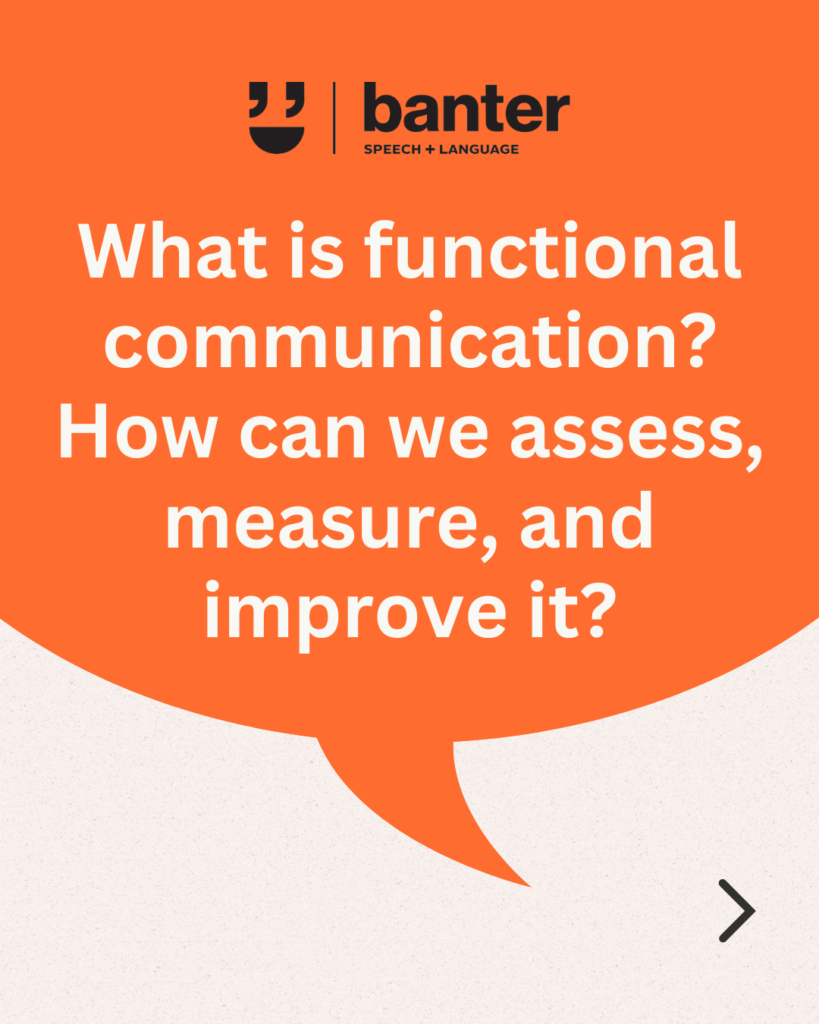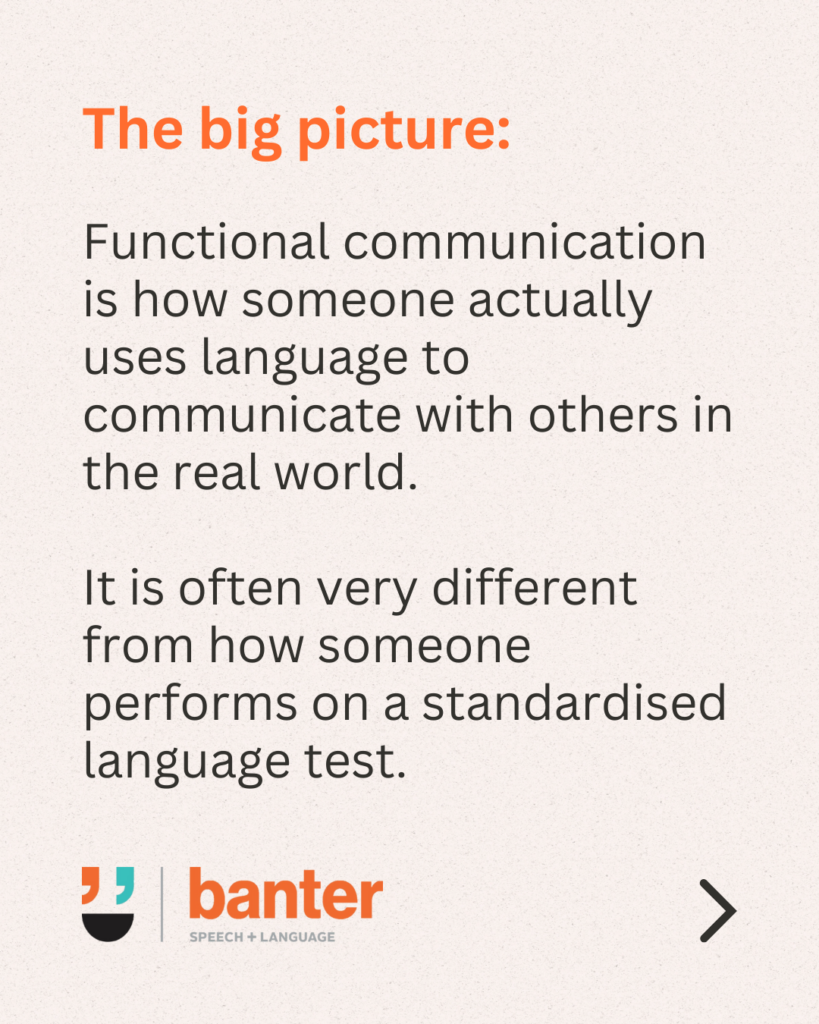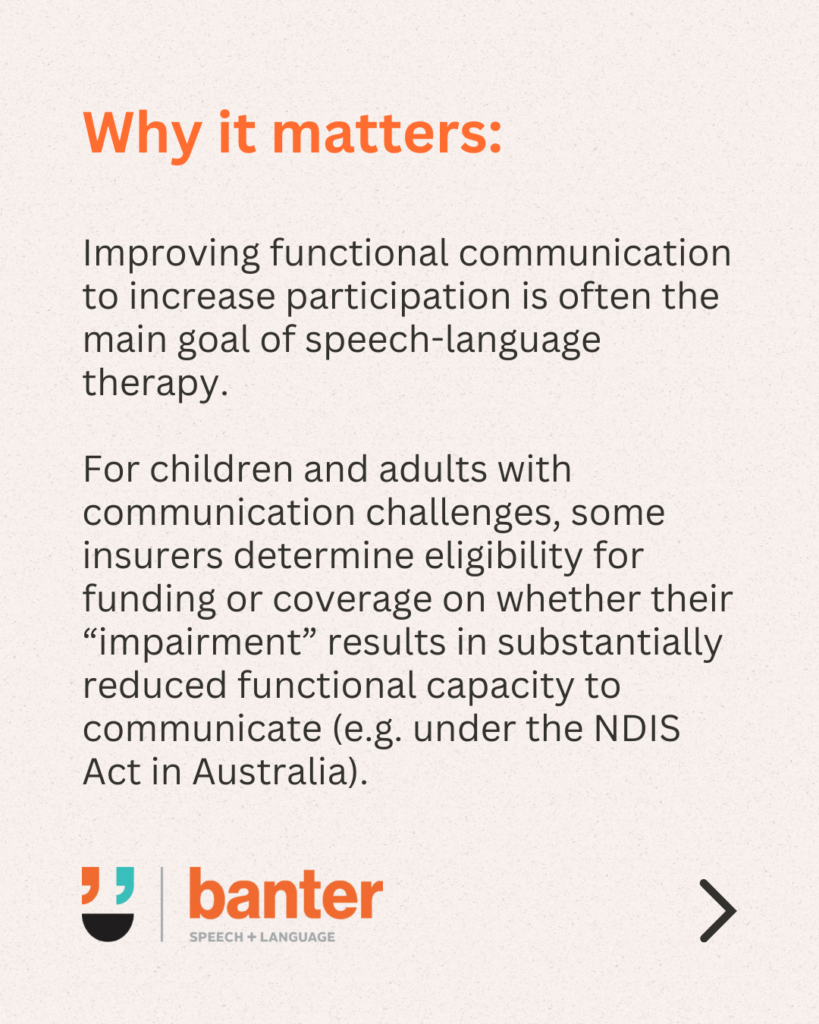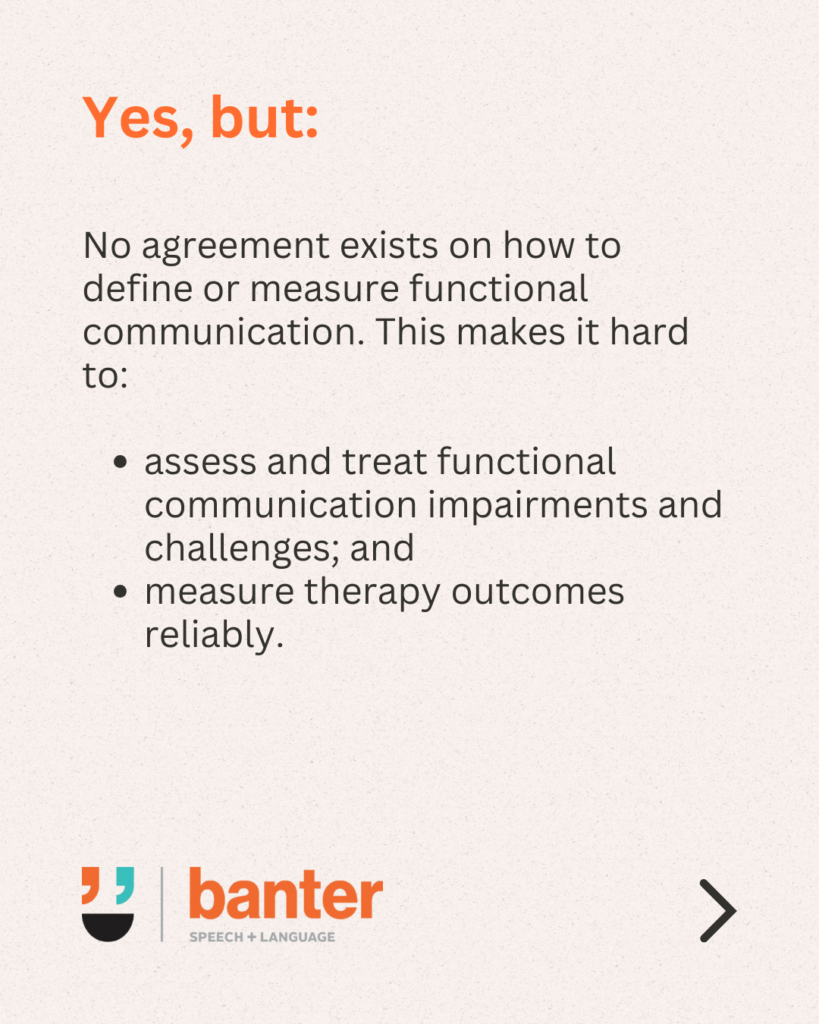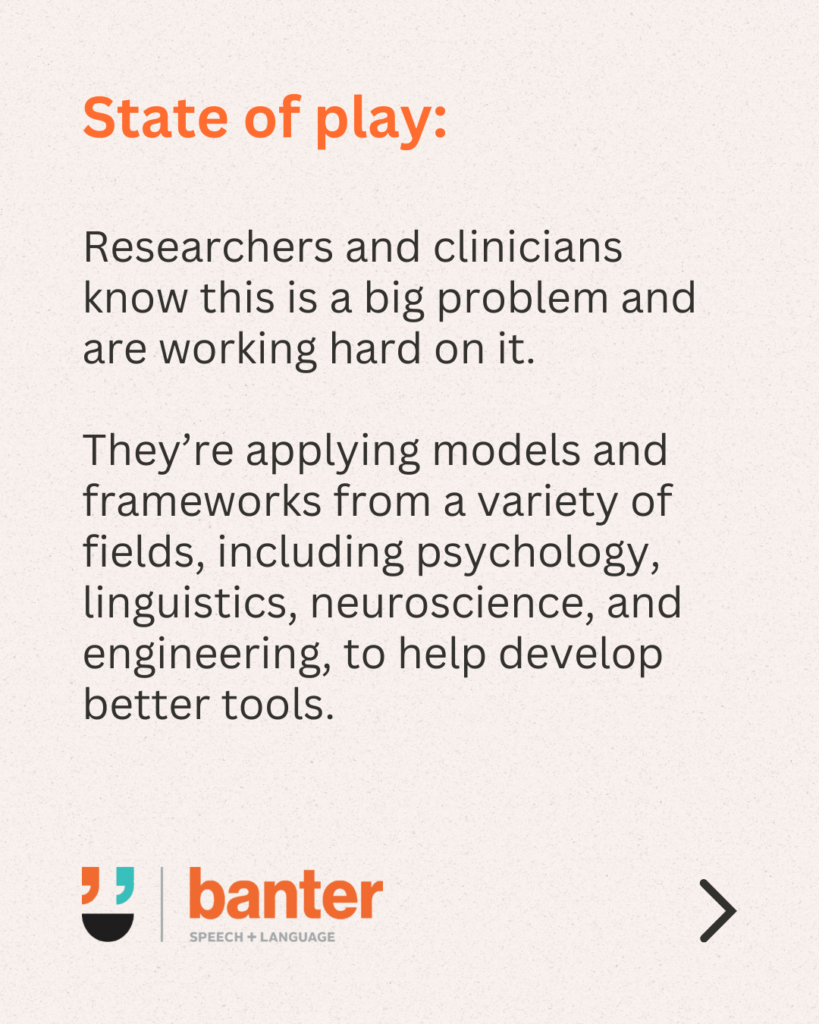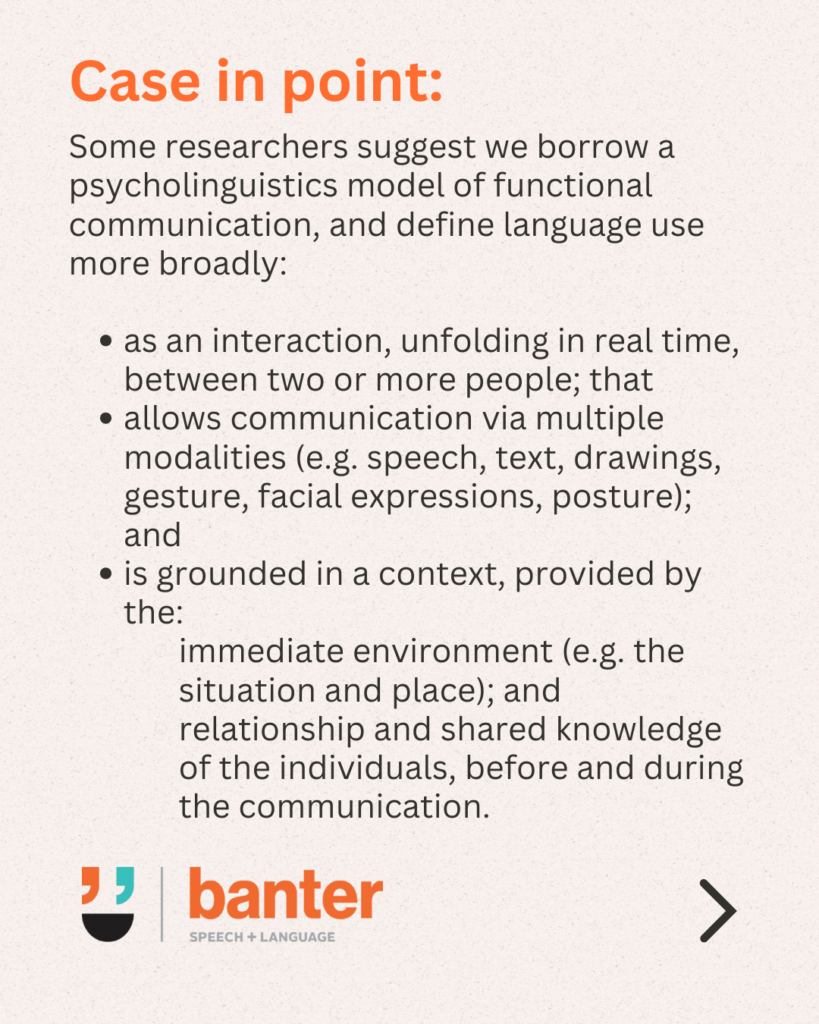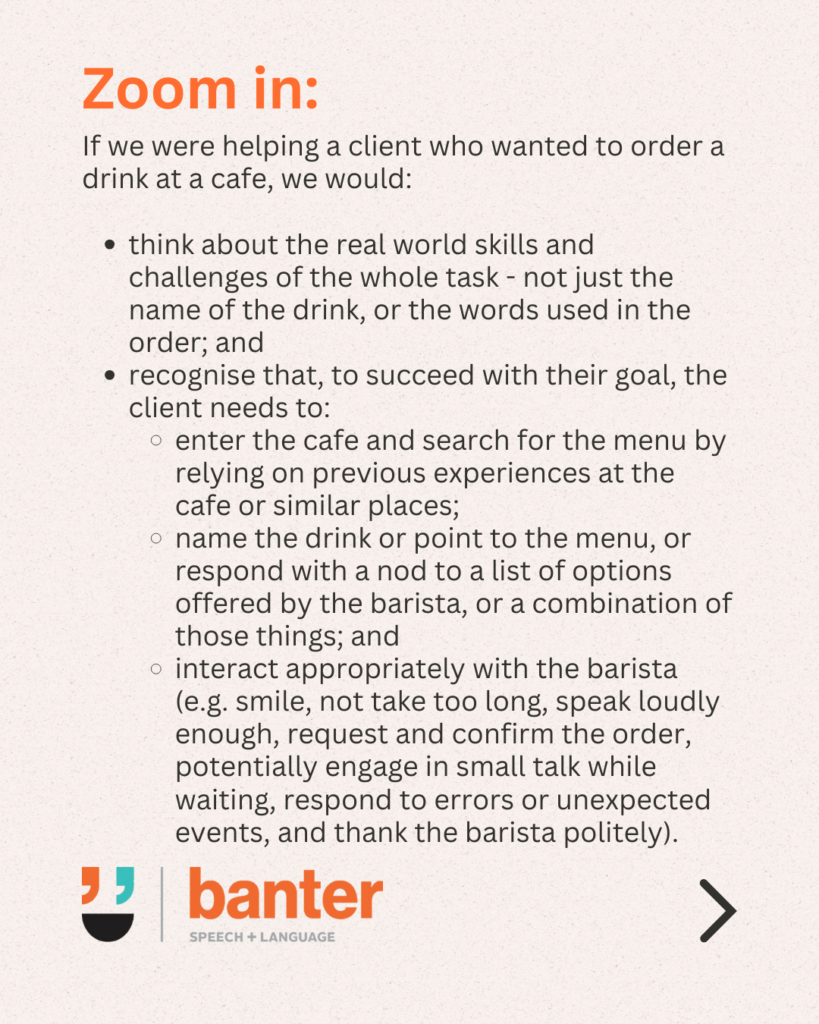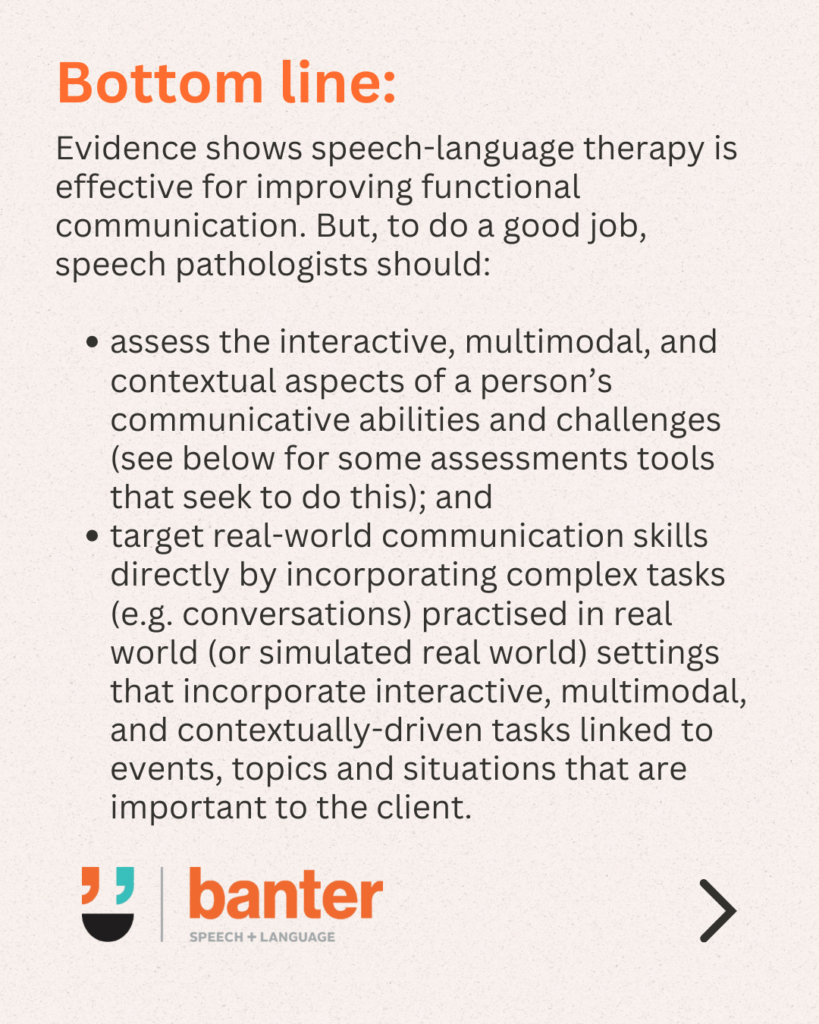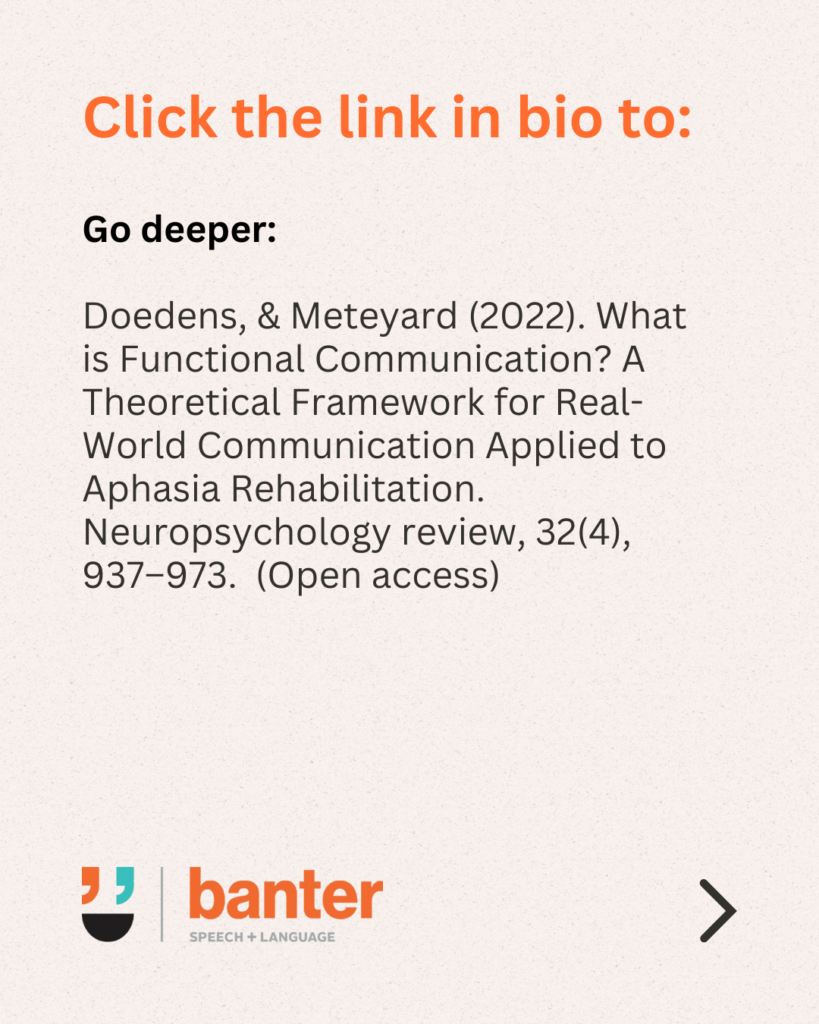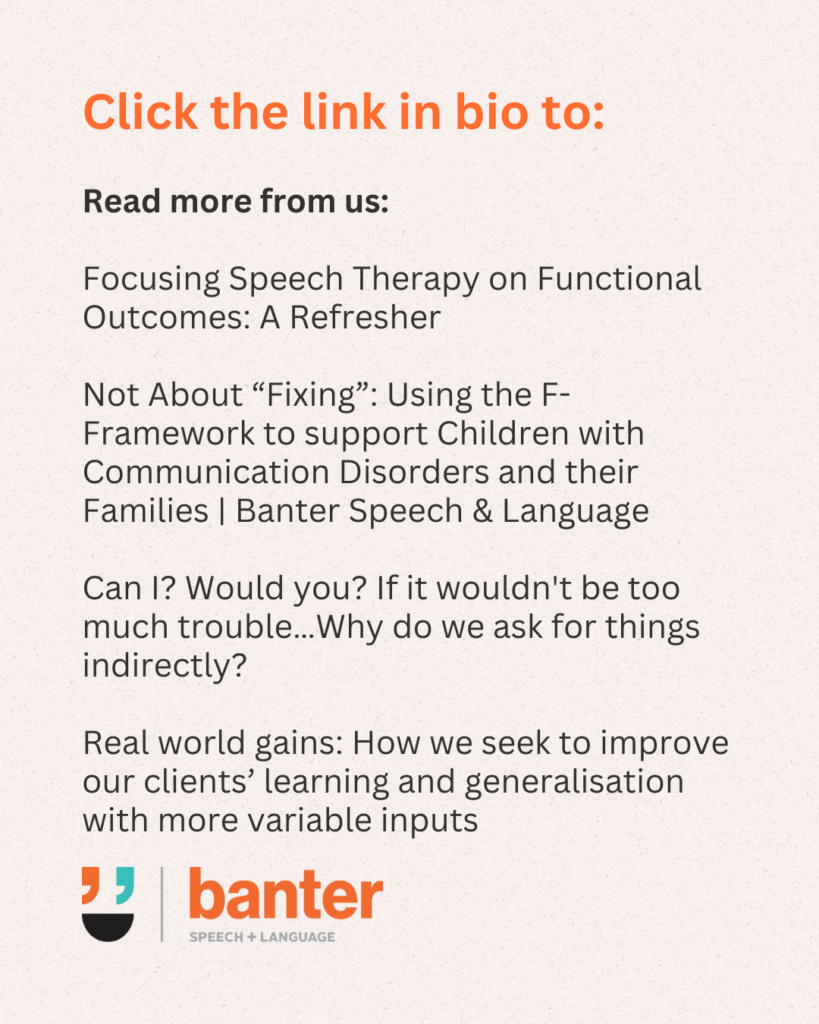What is functional communication? How can we assess, measure, and improve it?
The big picture:
Functional communication is how someone actually uses language to communicate with others in the real world. It is often very different from how someone performs on a standardised language test.
Why it matters:
- Improving functional communication to increase participation is often the main goal of speech-language therapy.
- For children and adults with communication challenges, some insurers determine eligibility for funding or coverage on whether their “impairment” results in substantially reduced functional capacity to communicate (e.g. under the NDIS Act in Australia).
Yes, but:
No agreement exists on how to define or measure functional communication. This makes it hard to:
- assess and treat functional communication impairments and challenges; and
- measure therapy outcomes reliably.
State of play:
Researchers and clinicians know this is a big problem and are working hard on it. They’re applying models and frameworks from a variety of fields, including psychology, linguistics, neuroscience, and engineering, to help develop better tools.
Case in point:
Some researchers suggest we borrow a psycholinguistics model of functional communication, and define language use more broadly as an interaction:
- unfolding in real time, between two or more people;
- that allows communication via multiple modalities (e.g. speech, text, drawings, gesture, facial expressions, posture); and
- that is grounded in a context, provided by the:
- immediate environment (e.g. the situation and place); and
- relationship and shared knowledge of the individuals, before and during the communication.
Zoom in:
If we were helping a client who wanted to order a drink at a cafe, we would:
- think about the real world skills and challenges of the whole task – not just the name of the drink, or the words used in the order; and
- recognise that, to succeed with their goal, the client needs to:
- enter the cafe and search for the menu by relying on previous experiences at the cafe or similar places;
- name the drink or point to the menu, or respond with a nod to a list of options offered by the barista, or a combination of those things; and
- interact appropriately with the barista (e.g. smile, not take too long, speak loudly enough, request and confirm the order, potentially engage in small talk while waiting, respond to errors or unexpected events, and thank the barista politely).
Bottom line:
Evidence shows speech-language therapy is effective for improving functional communication. But, to do a good job, speech pathologists should:
- assess the interactive, multimodal, and contextual aspects of a person’s communicative abilities and challenges (see below for some assessments tools that seek to do this); and
- target real-world communication skills directly by incorporating complex tasks (e.g. conversations) practised in real world (or simulated real world) settings that incorporate interactive, multimodal, and contextually-driven tasks linked to events, topics and situations that are important to the client.
Click the link in bio to:
Go deeper:
Doedens WJ, Meteyard L. What is Functional Communication? A Theoretical Framework for Real-World Communication Applied to Aphasia Rehabilitation. Neuropsychology Review. 2022 Dec; 32(4): 937-973. (Open Access)
Review examples of evidence-based assessments that seek to assess functional communication skills:
Read more:
Focusing Speech Therapy on Functional Outcomes: A Refresher
National Disability Insurance Scheme Act 2013 – section 24
Can I? Would you? If it wouldn’t be too much trouble…Why do we ask for things indirectly?
This article also appears in a recent issue of Banter Booster, our weekly round up of the best speech pathology ideas and practice tips for busy speech pathologists, speech pathology students and others.
Sign up to receive Banter Booster in your inbox each week:

Hi there, I’m David Kinnane.
Principal Speech Pathologist, Banter Speech & Language
Our talented team of certified practising speech pathologists provide unhurried, personalised and evidence-based speech pathology care to children and adults in the Inner West of Sydney and beyond, both in our clinic and via telehealth.


